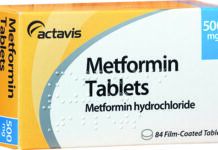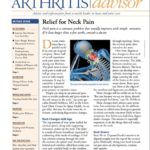Download The Full January 2019 Issue PDF
Virtual doctors office visits are part of the growing trend of telemedicine, which utilizes telecommunications and other technology to exchange health information from one site to another. Telemedicine is a broad term that might include remote monitoring of a patients heart function, long distance observation of a patient in the intensive care unit, applications and devices that transmit data (such as blood pressure), or consultation between two doctors in different locations.
Download The Full December 2018 Issue PDF
Achy, stiff joints from osteoarthritis get more common as we age. Your genes also contribute to the likelihood that cartilage in joints will wear down. Osteoarthritis occurs when cartilage, which covers the ends of bones, deteriorates, causing inflammation and structural changes in the joint. This can result in varying degrees of pain and reduced function. Weight-bearing joints, such as the knees and hips, are especially vulnerable.
Download The Full November 2018 Issue PDF
Have you ever been diagnosed with tendinitis whether in the elbow, shoulder, knee, hip or heel and a corticosteroid shot didn't work? The itis in tendinitis refers to inflammation, and corticosteroids are powerful anti-inflammatory medications. It seems logical they should work.
Download The Full October 2018 Issue PDF
Agrowing population of older adults may be partly responsible for an increase in elbow replacement surgeries for fractures of the bone near the elbow. Older adults are more likely than younger people to break a bone from a fall, including the lower end of the upper arm bone (called the distal humerus).
Download The Full September 2018 Issue PDF
Imaging studies have a limited role during the early stages of back pain, yet more than half of people with low back pain receive an imaging study. People with back pain often are inappropriately told to rest and stop work. Only half of people with low back pain are prescribed exercise, which is the most effective treatment.
Download The Full August 2018 Issue PDF
Hundreds of stem cell clinics have popped up across the country, many of them hoping to cash in on the enthusiasm surrounding this treatment. The field, particularly in the past five years, has been overrun with a large number of people who have co-opted the word stem and have been using it as a marketing tool to offer therapies to patients that are as yet unproven, says Dr. Muschler. That practice is a misuse of the term stem cell and amounts to selling false hope.
Download The Full July 2018 Issue PDF
To really understand gout you have to realize that this dramatic event is a symptom of the disease and not the disease itself. The disease of gout occurs when deposits of uric acid accumulate in and around joints, says Dr. Mandell. These deposits can occasionally break down and form crystals, which cause the symptom, which is the gout attack.
Download the Full June 2018 Issue PDF
Millions of Americans, both women and men, have low bone density, putting them at risk for bone fractures. According to the National Osteoporosis Foundation (NOF), about one-half of women and one-quarter of men over age 50 have a fracture during their lifetime.
Download the Full May 2018 Issue PDF
For people who are overweight or obese, the most effective treatment is weight loss. This is not surprising because every extra pound of weight adds two to four pounds of excess pressure on the knees. Losing weight is probably the most difficult part of the treatment puzzle, but its also the most important, says Dr. Day.
Download the Full April 2018 Issue PDF
Cleveland Clinic, along with other healthcare institutions, has put new practices and policies into place to deal with the opioid epidemic. We spoke with Lisa Yerian, MD, Medical Director of Continuous Improvement at Cleveland Clinic, and Cleveland Clinic psychiatrist Mohsen Vazirian, MD, about the problem and the response. In this and future issues of Arthritis Advisor we will continue the discussion.
Download the Full March 2018 Issue PDF
Do you sometimes have a painful neck? If so, you are in good company. About half of us will experience neck pain some time during our lifetimes. The good news is most neck pain is mild and will go away on its own or with simple treatment. It may be caused by a strained muscle or ligament, poor posture or repetitive stress.
Download the Full February 2018 Issue PDF
When you think of joint replacement surgery, youre probably thinking knees or hips. But other joints can be replaced as well, including ankles. Fewer ankle replacement surgeries are done, partly because the technology has lagged behind that for hips and knees. This is changing.







































